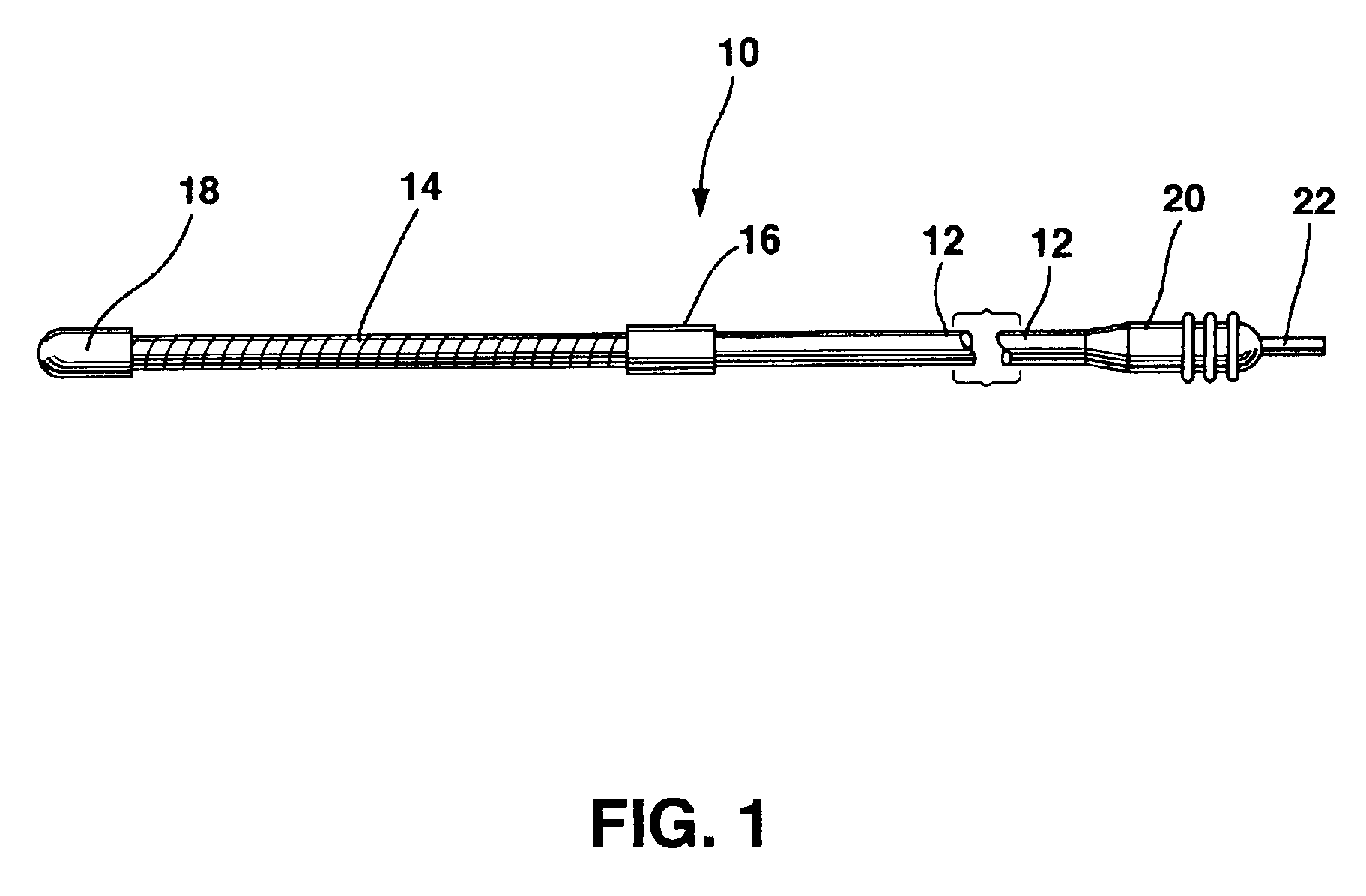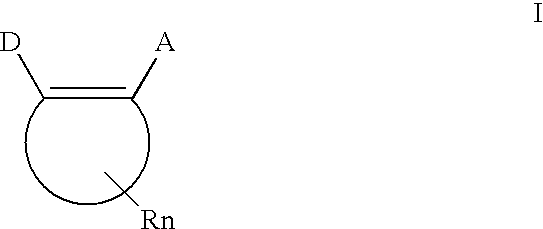Polymeric materials with improved dielectric breakdown strength
a technology of dielectric breakdown and polymer materials, which is applied in the direction of insulating conductors, cables, therapy, etc., can solve the problems of polymeric insulating material dielectric breakdown, failure of insulation, and failure to achieve total success in eliminating structural faults
- Summary
- Abstract
- Description
- Claims
- Application Information
AI Technical Summary
Problems solved by technology
Method used
Image
Examples
example i
Pendant Covalent Attachment of a Voltage Stabilizing Agent to a Silicone Polymer End Group
The voltage stabilizing agent 1 was synthesized according to scheme 1. To a 1 L three-necked round-bottomed flask was added toluene (130 g) and tetralone (111 g). The reaction was heated to 90° C., then the ruthenium catalyst of Scheme 1 (1.08 g) was added. Methoxysilane (about 4 mL) was added and allowed to react for about 2 minutes. The remaining silane (100 g total) was then poured into the reaction flask under a blanket of nitrogen gas. The reaction was refluxed for about 5 days under N2. Additional Ru catalyst (3.8 g) was added and the reaction continued to reflux for about 5 days. The crude product was distilled to obtain pure VSA 1.
VSA 1 (12.89 g) was blended into a silicone polymer (32 g) (Medical Adhesive Type A RTV [“room temperature vulcanization”], Dow Corning Product No. Q4750), along with heptane (27.8 g) and a tin condensation catalyst, dibutyl tin dilaurate (5 drops). This silic...
example ii
Synthesis of a Copolymer from a Voltage Stabilizing Monomer
Synthesis of the Voltage Stabilizing Monomer.
The voltage stabilizing monomer 3 was synthesized substantially according to the 16× procedure as described in Londergan (Polymer Preprints, 39(1) 272 1998). Toluene (500 mL) and dihydridocarbony(bis) (triphenyl phosphine) ruthenium (4.0 g) were added to a 4-necked round-bottomed flask along with a PTFE-coated magnetic stir bar. The reactants were heated to 135° C. then styrene (0.45 g) was added by syringe and allowed to mix for about 5 minutes in order to activate the ruthenium catalyst. Benzophenone (259 g) in 1 L of toluene was added. Then 1,3-divinyl tetramethyldisiloxane (265 g) in 1 L of toluene was added. Finally, another 200 mL of toluene was added for a solvent total of 3200 mL. The crude product was dissolved into 300 mL of hexanes. To this was added Amberlite IRC-718 ion exchange resin (150 g) in order to bind the Ru metal. Crystals formed and were isolated and washed ...
example iii
Synthesis of a VSA-Containing Dialcohol Suitable for Incorporation into a Polyurethane
The voltage stabilizing agents used to stabilize silicone rubbers may also be used to create polyurethanes containing covalently attached voltage-stabilizing agents. One way of doing so is to synthesize a dialcohol which contains one or more pendant, covalently attached functional groups that act as voltage stabilizing agents. This dialcohol can then be used to formulate a polyurethane using standard polyurethane technology.
While the following synthesis uses specific compounds, it should be understood that these specific compounds are used solely to illustrate how one specific dialcohol containing a chemical group that acts a voltage-stabilizing agent may be synthesized. Many chemical variations and synthetic strategies fall within the scope of the principle demonstrated, and will be obvious to one skilled in the art of chemical synthesis, including strategies such as incorporating the voltage-stab...
PUM
| Property | Measurement | Unit |
|---|---|---|
| Electric potential / voltage | aaaaa | aaaaa |
| aaaaa | aaaaa |
Abstract
Description
Claims
Application Information
 Login to View More
Login to View More - R&D
- Intellectual Property
- Life Sciences
- Materials
- Tech Scout
- Unparalleled Data Quality
- Higher Quality Content
- 60% Fewer Hallucinations
Browse by: Latest US Patents, China's latest patents, Technical Efficacy Thesaurus, Application Domain, Technology Topic, Popular Technical Reports.
© 2025 PatSnap. All rights reserved.Legal|Privacy policy|Modern Slavery Act Transparency Statement|Sitemap|About US| Contact US: help@patsnap.com



